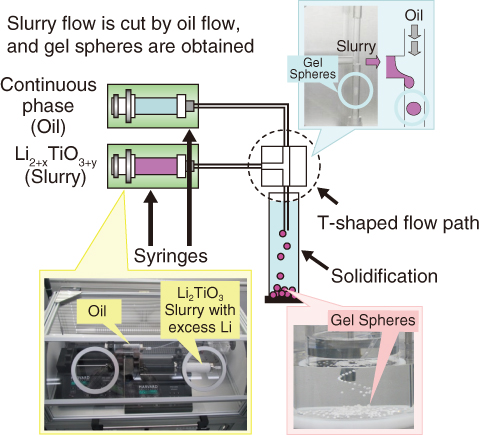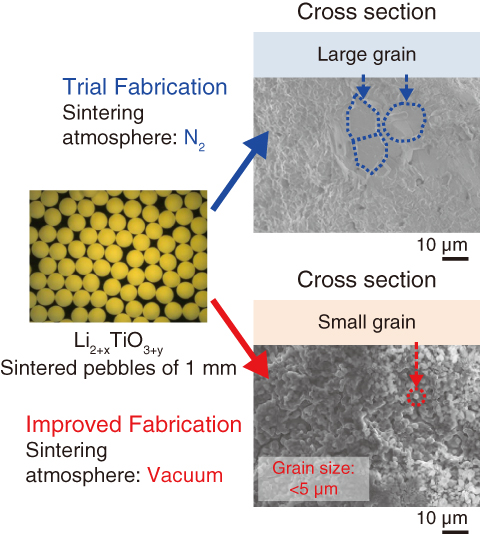
Fig.9-27 Pebble fabrication of tritium breeders using an emulsion method

Fig.9-28 Improvement of the grain size of tritium breeder pebbles
Fusion reactors need deuterium (D) and tritium (T) as their fuel. Since tritium does not exist in nature, it is necessary to produce tritium in a reactor by neutron irradiation of lithium (Li). Lithium titanate (Li2TiO3) is one of the most promising candidates among tritium breeders because of its tritium release characteristics. However, the mass of Li in the breeders decreases in a hydrogen atmosphere because of Li evaporation and Li burn-up.
To prevent the mass decrease of Li at high temperatures, Li2TiO3 with excess Li (Li2+xTiO3+y) has been developed as an advanced tritium breeder. The emulsion method as a pebble fabrication technique for Li2+xTiO3+y was developed under the IFERC program of BA activities. The emulsion method can easily produce large volumes of uniform submicron particles. For fusion reactors, tritium breeder pebbles of 1 mm are needed. To examine whether the emulsion method is suitable for pebble fabrication, we used the granulator shown in Fig.9-27.
This granulator comprised two syringes arranged in a T-shaped flow path. One syringe was filled with oil and the other with a Li2+xTiO3+y slurry. The two flow lines from the syringes were connected perpendicular to one another. This arrangement allowed us to cut the Li2+xTiO3+y slurry flow with an oil flow from the oil-filled syringe. The size of the tritium breeder gel spheres was controlled by the flow speeds of the oil and the slurry. The gel spheres were placed in an oil-filled container.
In a series of fabrication trials, the average grain size on the surface and cross section of the sintered Li2+xTiO3+y pebbles was 2–10 μm. Considering the tritium release characteristics, the optimum grain size after sintering should be less than 5 μm. The grain growth factor was assumed to be the presence of binder in the gel spheres. The remaining binder reacted with the Li in Li2+xTiO3+y and generated Li2CO3. To prevent this reaction, the Li2+xTiO3+y pebbles were sintered in a vacuum atmosphere (Fig.9-28). The average grain size on the surfaces and cross sections of the sintered Li2+xTiO3+y pebbles was thus less than 5 μm.
The results suggest that the Li2CO3 generated by the remaining binder affects grain growth and that sintering under vacuum improves the grain size of the pebbles.
<Previous: 9-10 | Next: 10 Computational Science and E-Systems Research >